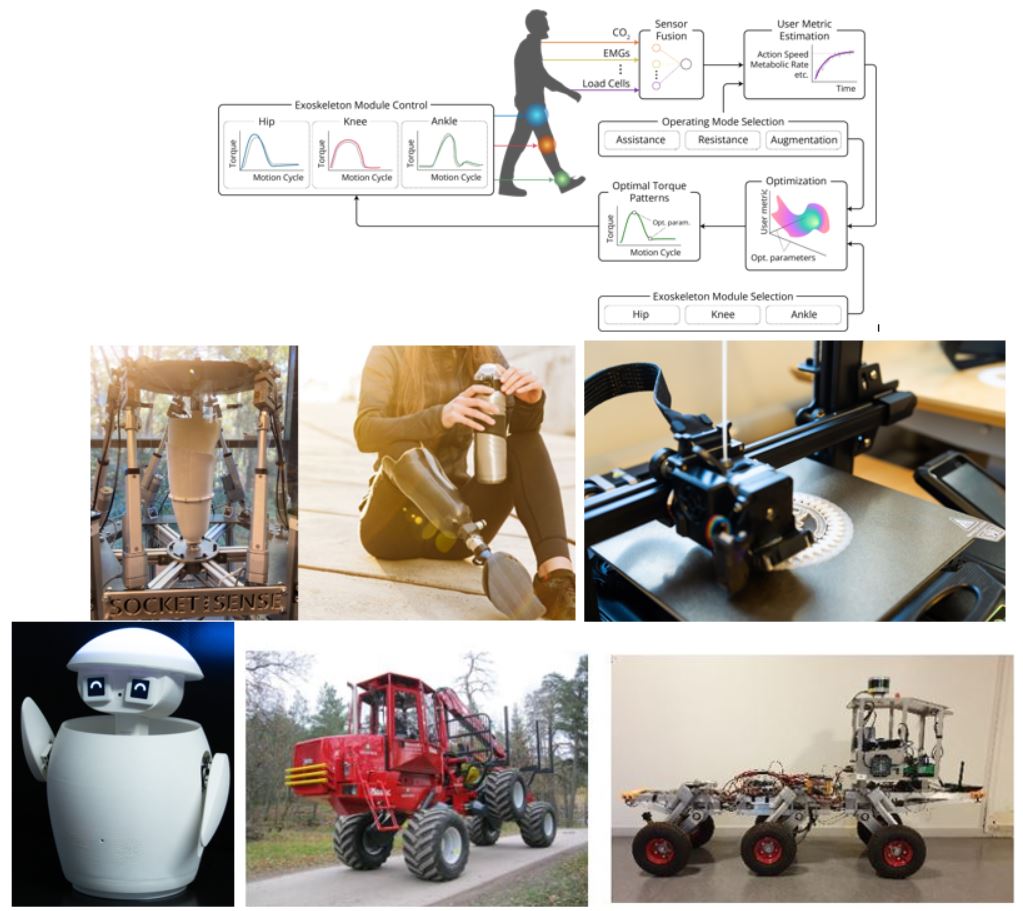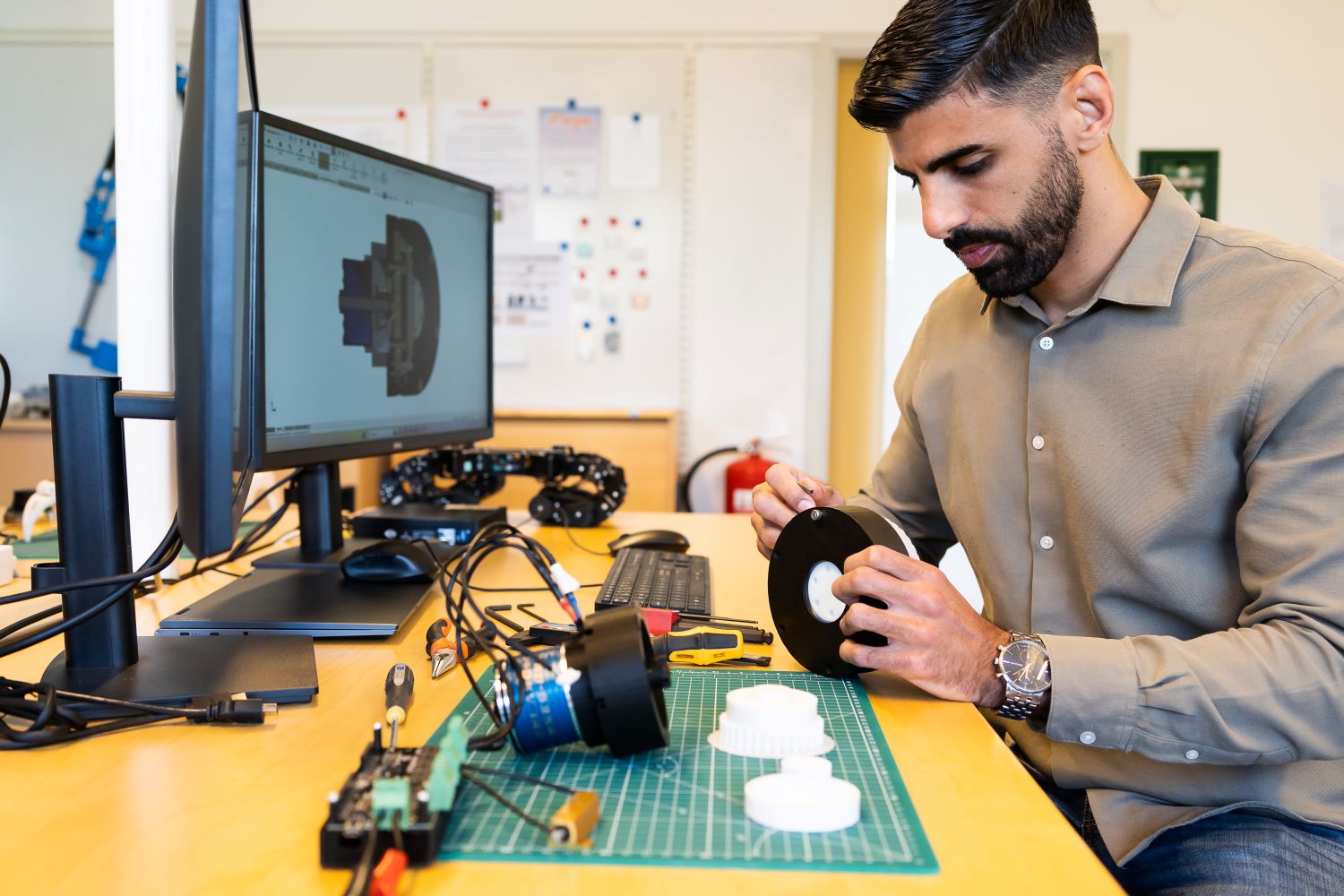Robot Design
Robot Design involves creating and developing robotic systems for various applications. Engineers and designers in this field take a holistic mechatronic approach, considering factors such as the robot's intended function, physical form and structure, movement and autonomy.

The field is constantly evolving with new technologies and materials being developed and tested. At KTH Mechatronics, the focus is on the use of additive manufacturing, smart materials, integrated sensors, compliant actuators, control systems and applied artificial intelligence to design, develop and control agile, modular and multi-purpose robot systems.
Research roadmap
Our planned research scope involves the development of a wide range of robotic solutions for various applications, including automated inspection in industrial and hazardous environments, bionics for assistance and augmentation in occupational environments, compliant and soft robots for safe interactions, medical robots for localized drug release, and energy-sustainable adaptronic wearables for healthcare.
To achieve this, we aim to form interdisciplinary research consortiums and build infrastructure for developing, testing and validating robot-enabled solutions that can address real-life problems. With a focus on sustainable development and ethical validation practices, our long-term plan is geared towards achieving positive environmental, societal and economic impact.
Our research in robot design
Our research focuses on the design, development and control of autonomous robots for various applications, including safe interactions, motion assistance, human-robot collaboration, and energy harvesting wearables. We utilize additive manufacturing techniques and compliant and smart materials to achieve these goals. Specifically, our current research includes:
- A mechatronics-twin based on a Stewart Platform for emulating dynamic scenarios of complex gait behaviour in transfemoral amputees.
- The design, development and control of a soft tabletop robot for safe interactions with children.
- Exoskeleton design and real-time control for human-in-the-loop optimization.
- The design and motion control of an autonomous robot for forestry applications.
- 4D printing of soft structures.


